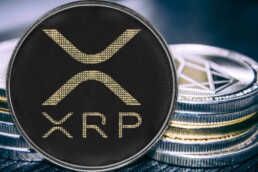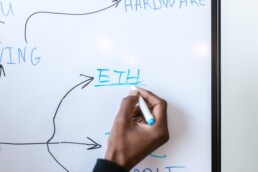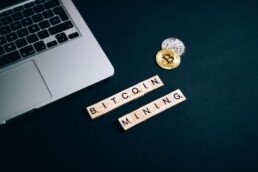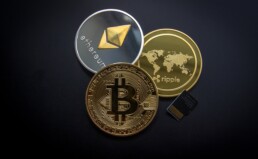XRP and Ripple
There is a coin in the cryptocurrency world that is considered a cryptocurrency when in fact it is not.
We are talking about XRP, created by the company Ripple. In common parlance XRP and Ripple have become synonymous, but the token's only name is XRP. This coin was not created with the idea of being a more functional alternative to Bitcoin, but to be a tool in the hands of the banking world by creating an alternative system to Swift.
XRP is not a real cryptocurrency because it is not totally decentralized.
In fact, Ripple began in 2012 as a system for transferring funds through a network for currency exchanges. In September 2018, Ripple was the second largest coin in the cryptocurrency market by market capitalization.
Ripple controls and manages XRP and has agreements with banks around the world. its code is open source and the value of the coin is affected by the value that is also assigned to the company.
Ripple was created solely to replace old systems such as swift, western union and moneygram with a cheaper system. Not all banks are connected to each other in the world with a single system. This forces banks to switch between different intermediaries in different countries, with long time and big cost for every transactions.
XRP is not created to be a store of value or to make transactions between economic actors in the real market but as a technical tool for specific banking actors or Payment Systems, companies, corporations, currency exchanges.
Because of its characteristics, Xrp cannot be mined but is a pre-mined currency. XRP is fast and scalable, in fact transactions in XRP take about 4 seconds versus 5-10 minutes for btc
XRP's wallet works with a minimum deposit of 20 XRP, an sistem created to avoid inordinate growth of accounts on its network for the sole purpose of clogging up the network and slowing it down.
The token is divisible up to 6 digits after zeros and some XRPs are destroyed after each operation, another system to protect the network. In the event of an attack, with thousands of useless transactions for the sole purpose of slowing down network, this system drains the accounts of the addresses that create the transactions.
Ripple's protocol is called rtxp Ripple Transaction Protocol and consists of pcs called validators that manage the network with their shared ledgers. Companies wishing to use Ripple's network must use gateways, which are points managed by banks and useful to those outside the network.
Ripple Labs was created only to offer banks various types of products, in fact RXTP is open source but the ripple products offered to banks are not and are created and developed only by ripple labs.
Ethereum
Vitalik Buterin has given to the world one of the platforms with one of the biggest potentials on the planet. Ethereum has a very interesting future ahead of it.
Ethereum, whose currency is called Eth, is not only on par with btc a currency for exchanging value, but it is a decentralized platform for creating complex applications. In fact, the goal of ethereum is to decentralize the Internet from the network giants of today.
Ethereum is a decentralized platform for the creation and peer-to-peer publication of smart contracts, or in short, contracts that are self-executing and self-fulfilling. The applications of these contracts are and will be of an enormous number and will cover Gaming and gambling, various contracts, certifications, voting, real estate records and much more.
Even the famous ICOs are actually very simple smart contracts tied to the written code base. This code makes the contract immutable once deployed on the network and after blockchain approval.
Complicated smart contracts have a very high inherent level of difficulty and a huge need for security. You have to create perfect programming and be sure that the contract does only what the programmer has decided. Always remember that Code is Law.
The principle behind Ethereum is that since it is a decentralized platform for program development, anyone can create a program that cannot be controlled by any person or group and that program will run on Eth's network. With a little study of Solidity, all intermediaries can be eliminated and developers can work directly on the Blockchain.
Ethereum was launched in July 2015 and has since become the second largest cryptocurrency by capitalization. Its potential is extremely interesting and deserves to be followed .
A lot of applications are being developed on the ethereum network, from DEFI to NFT tokens to decentralized exchanges that are used to exchange tokens of different types, on the same network, eliminating the trust problem of a centralized exchange.
Ethereum's ease of programming has meant that thousands of other coins, which we can call tokens or altcoins depending on the situation, have sprung up on its network.
Tokens can be defined as the tokens for slot machine, and there are different types of crypto tokens. If we take our cue from Finma, the Swiss regulator, we can define them into 3 categories.
- payment tokens not linked to other functions i.e. Bitcoin, Ethereum, Litecoin. These are real coins, born for value exchange.
- utility tokens that serve a single platform or digital service such as Ripple's XRP, or Binance's BNB, and can be exchanged outside their native platform.
- Investment tokens, which, on the other hand, represent asset values, such as shares in real assets, companies, revenues, or the right to dividends or interest payments. These tokens should be considered in relation to their economic function, in a similar way to shares or corporate bonds, or a derivative financial instrument.
How Cryptocurrencies Work
Few people know or remember, that cryptocurrencies originated as a derivative product of another invention. In fact, Satoshi Nakamoto had no intention of inventing another currency.
The most important part of his invention, when he gave the world the whitepaper of bitcoin or” A Peer-to-Peer Electronic Cash System" was that he managed to create a way to create a decentralized payment system. Throughout the 90s of the 20th century, attempts were made to create a digital system, but all these attempts failed miserably. But developing a system as if it were a peer-to-peer file exchange was the right choice
To set up a payment network you need accounts, user profiles and transactions. Easy to understand but then the biggest issue is to prevent users from spending the same money twice with different entities. To solve this, we use a central server that keeps track of all user balances. But if we do not have this authority or do not want a central entity to certify and monitor users, how do we solve the problem?
In a peer-to-peer network, every single node must have a list of transactions and check that they are valid. Most importantly, all nodes must agree with the approved transactions, because otherwise the network immediately collapses.
No one knew how to solve this network consensus problem until 'Satoshi's invention.
If we take away all the marketing and halo of mystery around cryptocurrencies, and go to the 'bones of their definition , we could define them as "a database with limited writeability within it that no one can change unless it meets specific conditions." This sounds like the definition of a bank account in any bank.
To give a correct definition, cryptocurrencies are a method of exchanging value based on internet technology, which use cryptography to carry out financial transactions that are decentralized, transparent and immutable thanks to blockchain technology.
In currencies such as Bitcoin, the database is managed by the various nodes in the network. Each node has a shared ledger inside which the values of each account and the transactions made are put. Transactions are files that say Gigi gave Y btc to Pancrazio and this transaction was signed by Gigi's private key and then sent to the network.
The transaction is known immediately by the network but it takes some time to get it approved. Approval or rather confirmation of the transaction is one of the key parts of the technology. A confirmed transaction is immutable.
Only miners can confirm transactions, through the process called Mining. Mining involves closing blocks of transactions in the blockchain. Before doing this, however, miners must check the transactions, approve them and enter them into the network. When they are confirmed they become part of the blockchain. And to do this they receive other cryptocurrencies as payment.
Technically anyone can become a miner, since there is no central authority that can approve us or not. Of course it takes security rules to make sure that the network is not destroyed by those who have an interest in its demise. In the case of Bitcoin, the system is called proof of work, which is based on the SHA 256 Hash Algorithm and involves the miner finding a hash, to connect the closing block with the previous block. We can define it, to keep it simple, as a cryptographic puzzle to be solved. Solving it, the reward will be some bitcoins. And this is the only way to create new bitcoins.
Cryptography, therefore mathematics, makes the system secure.
So we are not talking about trust between humans, which can be bought or blackmailed. You cannot blackmail or kidnap the child of a mathematical operation.
Some of the most interesting properties of cryptocurrencies are:
Irreversibility: no one after confirmation can cancel a transaction. Wrong address? Nothing can be done about it. Your pc was stolen with the private key? Nothing can be done. The safety net is not there.
Pseudonymity: no account or transaction is connected to real life. However, if you have done a KYC somewhere, your identity is traceable.
Fast and global: transactions are virtually instantaneous, the speed of confirmation depends on the coin, but of ranges from second to 10 min in Bitcoin. They have no borders though since the network is global.
Secure: As long as you own the private key you are safe. Big coins are unlikely to be hacked unless there are deliberate bugs.
Permissionless: you don't have to ask anyone for permission to use your coins. No one can stop you from using them.
Limited Number of Coins: A good portion of cryptocurrencies have a limited supply, such as Bitcoin with its 21 million. In contrast, DOGE has an unlimited supply with a huge daily production. The limited supply is obviously an advantage in terms of maintaining value.
Think about how useful these properties can be to citizen freedom.
How to get started with bitcoins!
what are the steps to get to know Bitcoin?
Step n1 Education
You have to understand the basics of bitcoin and what revolves around it, studying our guide and seeing our videos is a good starting point.
You have to understand why people appreciate this new technology, what gives it value and why, what is behind it and what are the ideas that led to its creation.
Step n1 is useful but not fundamental, in the sense that you can buy bitcoins even without knowing anything about it.
The second step is to gain experience with a purchase.
Create a wallet, sign up for an exchange and start moving your bitcoins.
Get experience through small transactions and expect to spend 100 euros that you can consider lost.
Then try to turn some of these bitcoins into ethereum and experience that too.
The third step will be to stay updated on the technology and the market.
And always follow us.
Monero
Today we are explore a crypto coin that works really good on privacy.
Let's talk about Monero.
Monero is considered a Private decentralized crypto currency, a decentralized coin that bases its story on privacy and not on anonymity.
It is necessary to define these two different concepts.
The concept of Privacy in cryptocurrencies is based on the fact that you as a user do not want other subjects to know what you are doing. The action you do must be unknown, but the identity of the person who performs it is public.
In the other side, anonymity means that it doesn't matter if other users know what we're doing, but these users don't know who is doing these actions. In this case we have Public Actions and Unknown Identities.
If we take for example the most famous cryptocurrency in the world, namely Bitcoin, we would discover that it is not private. The actions made by users are Totally visible on the blockchain but the identities are anonymous. In reality partially anonymous, or rather pseudonym.
Monero, on the other hand, is a private crypto that does not expose who sends money, how much it sends and to whom.
The transactions are traceable and the subjects who benefit from them cannot be indicated. It is not possible to understand who the transaction started from or connect them with others.
The first thought of all very often is that with such coins, only Criminals can benefit from it. But that's absolutely not true.
Monero was created for those who want to maintain their personal privacy and security, for those who do not want to be tracked by the big data of the big companies of the internet age in their routine behaviors.
Monero is also a great way to Cover the presence of a large personal btc build-up that could be attacked.
Monero has a possible use also for market predictions.
If we knew the addresses of the exchanges, we could monitor the quantities of coins entering and leaving these addresses, using this information to create long or short strategies based on our analysis.
Monero then solves the question of the fungibility of a traceable currency.
Each coin or cash note, in the real world, is the same as the other and must not be of interest to you where it comes from. We know from many newspaper articles that some of the bills we handle to buy bread may contain traces of drugs or have been used to buy other illegal materials.
However, in the bitcoin blockchain you can trace the path of each coin since its creation, so it could happen that some government agency knocks on your door in case of some investigation. All this is pure abstraction but who knows, in theory it can happen and that is why virgin bitcoins exist
A completely private coin like Monero has a complete fungibility like the 50 euro just out of the ATM and does not have this problem.
The difference between other private coins such as Zcash and Dash is that these offer the option of private transactions while Monero only offers private transactions.
The monero protocol works by obfuscating the three parts of the transaction. So Who sends, who receives and the total amount of the transaction
The system is created to obscure those who send money via a system called ring signatures. whoever makes a transaction has their signature mixed with signatures of previous transactions, creating confusion and the inability to trace the starting address of the transaction.
The amount sent is obfuscated through the Ring C T or Ring Confidential Transaction, where the sender sends only a small piece of information and this is enough to verify that the amount is legitimate. I will not go into the technical details as they are very complicated, but you can find everything on the official website of monero.
The recipient of the transaction is protected by the so-called Stealth Adress, in fact when it is sent to a public address, in reality I am sending to another address of unique use that is derived from my public address.
This creates a separation between addresses and only my private key will be able to use the funds sent to my address
Monero is a Proof of work blockchain and CryptoNight is its algorithm
Monero can still be mined not only from very powerful PCs but from PCs of normal use and there is no limit to the creation of coins.
Learn more about Mining here.
Cloud Mining
Let's go into the details of Cloud Mining. Btw you can learn more about Mining here.
Cloud mining is a service that allows you to mine bitcoins without having the necessary hardware but renting it through contracts with different companies around the world.
Bitcoin mining as we know is demanding and expensive, consumes energy and is sometimes even unprofitable.
In addition, profitable mining today after the last halving of May 2020 is even more difficult as the reward for closing a block begins to be scarce, and it will get worse and worse given how bitcoin is structured.
Without a low-cost power source to lower operating costs, mining farms are often a loss.However, cloud mining comes to the aid of farms that by selling their own mining contracts are able to recover funds for their survival.
For many people just entering the cryptocurrency world and wanting to diversify their investments, cloud mining contracts can be a possible way to go.
Simply investing your capital, sometimes without even setting up the machines yourself, is a strategy to be considered risky.
In fact, it must be assumed that for the user who has just entered the crypto world, lacking the appropriate equipment, the necessary skills, and low-cost electricity, cloud mining contracts are also a risk of being scammed.
These contracts de facto discharge part of the farm investment risk on the users who sign them, in exchange for a part of any profits.
These contracts are actually simple rental contracts for equipment and management to mine coins.
The owner and manager of the farm collects the fixed monthly or annual fee of the contracts sold and not through the creation of cryptocurrencies.
There is no need to mine bitcoins in reality, the farm could in cases of scam, not even exist with the manager who cashes the contracts without delivering bitcoins to customers because the farm fails to mine due to the difficulty of mining.
Serious cloud mining companies exist, you just have to commit to finding them, however, being aware of the risks of the investment. You must always stay away from those who promise you easy, fast and abundant earnings by paying very little.
If you really want to invest in cloud mining, privilege the study of coins and how to set up the machines.
Look for contracts where you set the usage parameters of the rented computers. If you have been good, you will have to celebrate.
Why do altcoins exist?
Why altcoins exist? and what are they for?
Alt coin is the abbreviation for Alternative Coin, or coins alternatives to Bitcoin.
Bitcoin as we know was the first truly successful cryptocurrency, which show the way for all those who followed it.
But Bitcoin is not perfect and altcoins are used to create a hypothetical better version of bitcoin or a coin that has different purposes and functions from those of Bitcoin, in fact some of them are faster than bitcoin, others focus on anonymity, others do different things like ethereum and others.
Altcoins can then be mined in a different way, for example bitcoin has an algorithm called SHA 256, an altcoin like Litecoin, which derives from Bitcoin, has a different algorithm called Scrypt.
There are now thousands of altcoins on the market, but only a very few have achieved a decent fan base. We must in fact divide the coins that have a utility, the coins that are based on projects that do not really have to do with the blockchain and coins that are exclusively scams or useful for the Pump and dump.
A good way to analyze the coin we have spotted is to understand if it has a following by first checking the market cap and then the community of users who use or follow it.
The market cap is the term used to indicate market capitalization.
This is calculated by multiplying the number of coins in circulation by the price of the exchange. A high value generally indicates a certain interest from the world and therefore value within the coin.
Remember that you can invest in an altcoin both when it is already on the market and before it is issued, in what are the famous ICOs.
if you want to invest in an altcoin, in the post ICO period, in general you will have more information and less chance to buy a scam but most likely if the coin has an actual use or value, you will pay much more than the price of the ICO.
So inform yourself and study well and always beware of ponzi schemes and fraud.
Learn more about Scam here.
Trading vs Investing, with Bitcoin
In this article we talk about bitcoin trading, specifically seeing the difference between investing and trading.
First of all we need to define what bitcoin trading is.
Bitcoin trading is the exchange of fiat currency or other cryptocurrencies for bitcoin, on an exchange, with a short-term vision and then returning to fiat currency by exploiting the high volatility to gain in fiat currency.
We must understand that the difference between investing and trading refers specifically to the long or short term view. In fact, investing means buying bitcoin today and then reselling it in 3 4 or more years, regardless of its movements. Trading bitcoin, on the other hand, means taking advantage of its movements to make money.
The two views are both correct and are the result of two different points of view. Investors generally believe in the underlying technology and ideology of Bitcoin, seeing in it a possible bright future for the asset. Traders, on the other hand, may not be interested in technology but are interested in the short-term economic potential of the instrument, so ups and downs are welcome when positioning in a trend.
The two visions can be experienced simultaneously. Nobody forbids you to put some bitcoins away on a wallet for the long term and at the same time trade others for the short time.
A popular slang term in the bitcoin world is hodl, which refers to someone who has long-term invested in bitcoin. The term comes from a mistake that has become popular on the bitcoin talk forum.
At every big down fall, don't panic and hodl!
Traders not interested in bitcoin technology consider it an interesting asset for their work as the market is open 24 hours a day all year round. The volatility of the currency and its riskiness are the perfect fuel for day traders and swing traders.
One last observation. Don't turn a short-term trade into a long-term investment just because the market has gone in the opposite direction to what you thought and your loss percentage became important because you didn't use the stop loss.
Being exposed in crypto consciously and knowing the dangers.
Why investing in cryptocurrencies? Why starting to study a whole new environment with a huge initial difficulty? Why endanger that part of our assets that we have decided to allocate in cryptocurrencies?
Because yes.
We start from the idea that the world of investments as a whole is huge, and that Blockchain is currently the most recent technology and with the greatest growth push on the planet. Investing in blockchain projects is within everyone's reach, so even less capable investors with little experience or just beginners can invest. Investors of this type are the ones who will make the biggest mistakes so they need to understand the various projects and decide if they are worth our money.
If you remember the dotcom bubble, you could have invested in amazon or google or other realities of the early internet era ... But we only remember those who survived and we forgot all those realities that had stratospheric growths in a few weeks, and then see your stock value crash to the downside and disappear from the market. But only from the market, not from the sad and shocked minds of their investors ...
Let's forget for a moment Bitcoin and Ethereum which are now the two champions of the crypto world, the universe of Blockchain projects is huge and varied.
It should be immediately understood that there are many projects that are or have turned out to be exclusively scams or clones of other more noble and serious projects, which with scammy name and various tricks have simply tried to drain funds from inattentive and inexperienced investors.
Currently over 90 percent of blockchain projects launched and funded have failed, most without writing a single line of code. Aware of this, and also aware of the fact that the Blockchain is the future and it is time to be inside it, as investors we must ask ourselves some simple and basic questions to understand where to put our funds.
Let's start with the first doubt to be eliminated, if the project we are evaluating creates a product or service that solves a real problem and if this is in line with Blockchain technology. Not all projects showed off as crypto friendly are suitable for the Blockchain. In case it is really suitable, and perhaps thanks to the blockchain it solves an unsolvable problem, well we have taken a big step forward. Those who do not respect this rule can be eliminated in a long-term investment perspective.
After that we will have to understand if the evaluated product really exists or is still under development or worse, it is only on paper and not even explained in a perfectly understandable way. In fact, a product under development takes months if not years to be launched on the market, extending the time for the return of the investment and therefore enormously increasing the risks for the investor.
After the product, the team should be checked. It is clear that the team must reflect experience in the sector to which the project belongs and the individual members must be experienced and competent, with a good curriculum. The team will then have to try to create partnerships with various companies already on the market. Experience, partnership and reputation are excellent indicators.
Another aspect to check is the type of token created to finance the project and offered to the public. There are utility tokens that offer a service linked to the project and whose value changes according to company and market trends. Otherwise, security tokens can be offered, which are backed by real company assets. These tokens are regulated and, in addition to offering an extra guarantee on the project, they carry rights on assets owned by the company.
Another point to check for the investor is the control of who issues the token, whether through an exchange or directly by the company in charge of the project. In the case of little-known exchanges with an unclear past, here is an alarm bell.
And this point makes us shift our attention to the dangers of investing in cryptocurrencies. Danger seen as the possibility of losing all our accumulated value.
First of all we need to define and differentiate the types of risks we run by investing in crypto.
We have two main type of risk, which are technical risk and financial risk.
When we talk about technical risk, we mean any problems we may have with wallets, exchanges and other technological issues.
The wallet is your property and it is your responsibility to manage it in the best possible way. One of the things that you cannot predict, however, is a possible bug that cause to hack the wallet and make you lose your funds. For this reason, the best choice to always make is to look for and use only the most successful wallets created by companies that invest a lot in security for their products. This choice is yours and it is your responsibility.
The same goes for the choice of the exchange on which to operate. An exchange can be attacked and its wallets can be hit and looted. But a large exchange has the funds and a strong need to protect itself, so it will always be state of the art in protecting its business and consequently its users. On the other hand, small exchanges do not always have these capabilities and are much more risky. The risk you take, however, can be rewarded since small exchanges often have coins that are not present on the larger ones and the movements can be more violent and faster, making you gain or lose more.
Leaving your coins on an exchange is a big risk. Remember that the coin that is on your wallet on the exchange is in the wallet of an exchange and not on your proprietary wallet. If something should happen to the exchange, you are almost certain that you have lost your parked coins waiting to be traded. In my experience it is better to spend something on movements from and outside your wallet. You run the same risk when you borrow your coins on an exchange that gives you this option. In this case, however, the risk is greater since your coins will be blocked for the entire time of the loan, not allowing you to quickly exit the exchange for whatever reason you want. It should also be considered that exchanges do not always allow immediate exits since the general timing is between 12 and 24 hours.
Scams are a full-blown reality of this world, we have made an article with the list of the most famous so we can teach you how to defend yourself. Learn more about Scam here.
Another problem you may find is the technological protection of the coins. Coins like Bitcoin and ethereum are difficult to attack, the development teams are very large and made up of capable programmers with very large budgets. On the contrary, coins just put on the market and therefore small and with few developers could have bugs that undermine their intrinsic safety. Choosing the coin to invest in is your responsibility, you take a risk in any case but it is a risk that you can manage.
Therefore the risk is reduced by using high quality wallets, exchanges of proven trust and coins among the most liquid. If you use the right things in the right way you have lowered the problematic risk.
Now let's face the financial risk.
The major problem encountered in the crypto market is the extreme volatility of prices, given by a combination of low market liquidity, thin books and a strong presence of whales that can move the market. However, this volatility is the key to making money. If we position ourselves in the right trend, our coin will obviously have a growth that is impossible on conventional markets.
But be careful, there are no guarantees regarding the growth of the price of a coin. It is not acceptable to buy something at random and abandon it, and then hope that in the following months or years it will increase in price.
The same goes for the underlying of each coin. The underlying of each coin is the development and use technology that it has in the real economy. If this technology is useless, wrong or totally non-existent, it is obvious that the value could collapse and reach zero.
There are Ponzi schemes like OneCoin which have no underlying and which are based only on the trust placed in them. When confidence collapses, OneCoin is like a fake baseball card. I only mentioned OneCoin for the trust issue, OneCoin is not a cryptocurrency.
Bitcoin has value because people believe in this technology and believe in the monetary design philosophy that underlies it. Bitcoin is also valuable because it is used according to its philosophy. The use of a coin, like the trust that the public has in it, creates value on the market.
There are some basic things that you must always remember.
By investing in anything, you are taking a risk. Risk that you can lower but never eliminate. Balance the risk on your profile, never overshoot it. Every mistake is always paid with your money.
In the long run there are no certainties about the value, while someone more famous and better than me said that in the long run we are all dead.
The risk of losing and zeroing your trading account is as real in crypto currencies as on any financial instrument. On crypto and derivatives, obviously all this can happen very quickly.
Anyone who promises you fast, safe and risk-free earnings is lying and wants to scam you. Say goodbye to this fool.
Blockchain protocols: investors point of view
In previous articles we have seen that there are different types of coins and therefore there are different ways to create them, or rather, to mine these coins. Learn more about mining here.
With different protocols for creating coins, from the investor's point of view we have another feature to be studied before making any purchase.
In fact, cryptocurrencies investors must analyze the blockchain protocol before investing in coins. Consensus algorithms can be the key to success with effects on inflation rates, security and the total value of the currency. Learn what is a Blockchain here.
But what is a Blockchain protocol?
A blockchain protocol is the common term for defining consensus methods.
Consensus methods are different systems created to reach consensus and validate transactions in a blockchain network.
Some require miners to hold coins, others require hardware to mine such as computers or graphics cards.
We know there are 3 types of consent which are:
Proof of work, proof of stake and delegated proof of stake
Let's briefly see some details:
Proof of work: from energy to value
Bitcoin and other coins use Proof of Work (PoW) as a consensus algorithm.
In the PoW consensus type, miners participate in the network by adding large amounts of computing power.
Big miners create physical mining rigs, consisting of several graphics cards in series, if not hundreds.
More powerful platforms equate to more chances of closing the next block and receiving the next block's reward coins.
Blockchain Transactions also include transaction fees.
So, in this case, the miner has to buy a large number of expensive graphics cards, spending a lot of money before earning a single bitcoin (or any other currency).
Miners can create a mining pool to combine their computing power and add more chances of receiving rewards.
In the proof of work economy Miners must spend thousands of dollars to build computer technology plants and pay high electricity bills to participate in networks of this type of blockchain otherwise, there would be no currency and no blockchain
In theory, these costs should add great value to a PoW coin
Miners don't want to sell coins below their mining cost
If you want to find out the minimum cost of a coin of this type, you need to look:
- The cost for miners to mine new coins (rig + electricity)
- The time to create a block and its reward
Let's take an example. If we have a PoW scheme with:
- Quick block creation times
- High reward
- Low total amount of money offered
Then the total supply will reach its maximum rapidly. As long as the demand for money is high, the currency should perform well. Otherwise you can see how the market reacts and wait until all the coins are created.
In another PoW scheme we have:
- Slow block creation times
- Low reward for blocks created
- high total money supply
In this example, the inflation rate is low due to lower demand. The coin will be profitable as long as it is new and scarce on the market.
Proof-of-Stake: no more platforms and computers
Proof of Stake or PoS does not require the purchase of mining rigs or the payment of huge electricity bills
The POS is a very different consensus model that allows all coin holders to contribute to the network and block building
You have to keep the coins in your wallet, activate staking and leave your computer on and you will receive rewards by acting as a miner
In this way, the Pos is a great incentive to hold coins also because the more coins you have, the more you contribute to the network and the more you have the chance to solve the next block.
So, in this case, miners have to spend a lot of money to buy coins to stake.
This is much simpler and faster than the proof of work protocol
The only available metrics are total supply, current supply, inflation rate, and current market price. So, you can analyze this market in a similar way to a fiat currency by measuring supply and demand.
DPOS Delegate proof of Stake with reliable nodes
This is a variation of the classic POS.
In this protocol, all coin holders elect delegates.
These delegates are the only ones authorized to verify and add new blocks to the blockchain.
In this case we can have a centralization of the first users with many coins. By the way, delegates need to be voted on by the community, so a good reputation and participation in the coin community is needed.
Lisk as an example has a Dpos consensus scheme.
As we said earlier for the consensus on the POS, if you want to be a miner you have to buy a lot of coins, but unlike the POS, in this case you have to trust the community. And you can't buy or sell trust.
There is no perfect system, but these 3 systems can solve the inherent control problems of a decentralized currency. It should also be noted that you have to consider the environmental problem of energy consumption among various factors.












